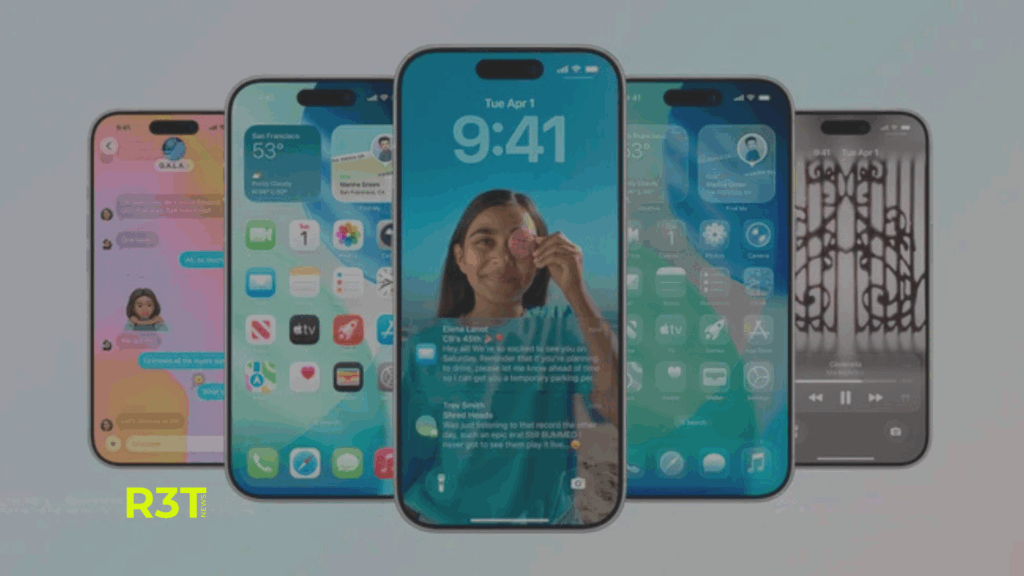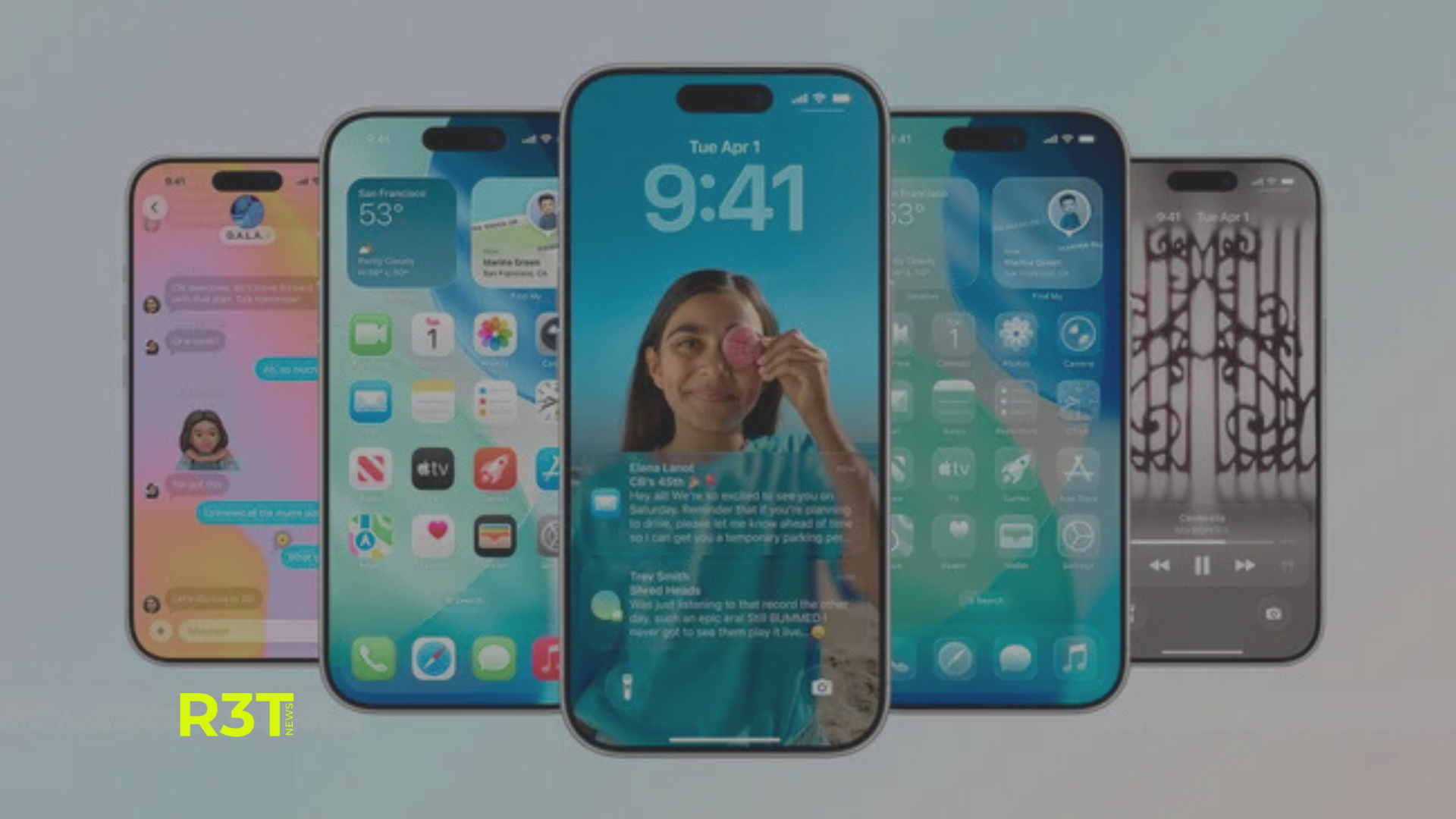Apple iOS 26 Release: Everything you Need to Know
Apple launches iOS 26 alongside watchOS 26, iPadOS 26, and macOS 26 Tahoe on Monday.
These updates overhaul icons, the lock screen, and overall system appearance for iPhone, iPad, and Apple Watch users.
They introduce the Liquid Glass design, a softer, rounded, semi-transparent aesthetic that divides opinions.

Release Schedule
Downloads begin around 6pm UK time, or 1pm in New York and 3am in Sydney.
Apple rolls out updates to all eligible devices simultaneously, unlike competitors’ staggered releases.
Compatible Devices
iPhone 11 from 2019 and newer models support iOS 26.
iPad Pro from 2018, iPad Air 3rd generation from 2019, iPad mini 5th generation, iPad 8th generation, and later tablets run iPadOS 26.
Apple Watch Series 6 from 2020 and subsequent models receive watchOS 26.
MacBook Air from 2020, 16-inch MacBook Pro from 2019, 13-inch MacBook Pro from 2020, Mac mini from 2020, iMac from 2020, Mac Studio from 2022, and Mac Pro from 2019 or later install macOS 26 Tahoe.
Installation Process
On iPhone or iPad, open Settings, go to General, then Software Update, and tap install.
The process downloads, verifies, and reboots the device.
Use a Mac or iTunes on Windows as an alternative.
For watchOS 26, ensure an iPhone 11 or later runs iOS 26 first.
Open the Watch app on the iPhone, navigate to General, then Software Update, and charge the watch during installation.
On Mac, access System Settings, select General, and choose Software Update.
Cost Details
Apple provides these updates free of charge.
Any request for payment signals a scam.
Naming Shift
Apple adopts a year-based naming scheme.
iOS 18 and similar versions from September 2024 cover the 2024-2025 period.
iOS 26 and equivalents now apply to 2025-2026, similar to sports seasons.
Liquid Glass Design Across Platforms
The semi-translucent style resembles frosted glass bubbles over a flat background.
It draws from the Vision Pro headset’s depth-based interface for iPhone, Apple Watch, iPad, and Mac.
Icons, notification banners, buttons, and menus feature rounded edges with a sheen that responds to motion, revealing underlying wallpaper, apps, or content.
iOS 26 Features
The home screen and icons undergo major redesign with Liquid Glass.
Users customise standard app icons, make them colourless and translucent, tint them, or apply a dark variant.
Notifications bounce from the screen’s top.
Widgets appear at the lock screen’s bottom, and the clock adjusts size based on notification count.
Buttons shrink when idle.
The camera app conceals modes behind sliders or pop-up menus.
Safari’s address bar and navigation buttons collapse to a bottom button during scrolling.
Swipe the button upwards or tap the three-dot icon to access tabs and controls.
The phone app screens calls from unknown numbers by answering and requesting the caller’s name and purpose, allowing users to decide on answering.
Messages filters texts from new senders and detects spam, routing them to separate inboxes.
The phone app holds calls for users until a customer service agent connects.
Phone, FaceTime, and Messages include built-in live translation.
A new Games app serves as the gaming hub on iPhone.
It houses the games library, highlights friends’ activities, and replaces Game Centre for achievements, competitions, and events.
iPadOS 26 Enhancements
iPadOS 26 applies the iPhone’s visual redesign with clear icons and hiding buttons.
It introduces substantial multitasking improvements for users treating iPad as a computer substitute.
Menu Bar and Window Management
Swipe down from the screen’s top centre in an app to display the menu bar, featuring settings, file, edit, view, window, and help options akin to Mac.
The traditional red, yellow, and green dots control closing, minimising, shrinking, or expanding windows.
Press and hold these for tiling and moving options, or resize and reposition windows freely.
Swipe up and hold for Exposé, flick apps left or right to snap to sides, or flick up for full screen.
Users open multiple overlapping windows, tile them side by side, or treat the home screen as a Mac desktop.
Files and Preview Apps
The revamped Files app simplifies document management, including setting default apps for file types.
Add folders like Downloads or Documents to the Dock for quick access.
The Mac Preview app arrives on iPad, handling PDFs, images, and documents for viewing, editing, or markup with Apple Pencil.
watchOS 26 Updates
The Liquid Glass design stands out on Apple Watch with notification bubbles over the watch face, floating app buttons, and softer widget stacks.
Workout Buddy
Workout Buddy, Apple’s fitness chatbot, provides advice and encouragement during exercises, akin to an Apple Fitness+ coach.
It alerts on milestones, goals, pace, or thresholds, such as a faster last kilometre, and recaps workouts.
It operates via Bluetooth headphones and requires an iPhone 15 Pro or later nearby.
Sleep and Health Features
The sleep app delivers morning sleep scores for quick assessment of rest quality.
Series 9, Ultra 2, or later watches notify of hypertension signs over 30 days via a new blood pressure feature.
Gestures and Faces
A wrist flick gesture dismisses notifications, alarms, and alerts by turning the wrist away and back.
It complements the double-tap for touch-free control.
New watch faces include Flow, a digital face that shifts colour and reacts to movement with Liquid Glass.
Exactograph uses separate analogue dials for hours, minutes, and seconds in open or closed forms.
Waypoint, exclusive to Ultra, surrounds time with a live compass to landmarks.
A revamped Photos face features floating numerals.
macOS 26 Tahoe Changes
macOS 26 Tahoe adopts iPhone and iPad features, including rounded window corners and glass effects.
Phone Integration
The full Phone app enables calls via Wi-Fi and connected iPhone, displaying recent calls, voicemails, contacts, and supporting screening and hold assist.
Live activities from iPhone, like sports scores or delivery updates, appear in the Mac menu bar.
Spotlight Improvements
Spotlight integrates actions for sending messages, emails, creating notes, or adding reminders directly from the search bar.
Users filter files by type, group them, locate third-party cloud documents, and browse apps, files, clipboard history, and more without full searches.
